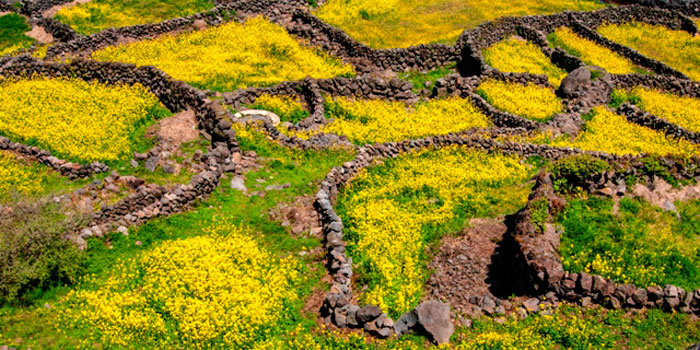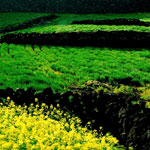Jeju Batdam Agricultural system, Republic of Korea
GIAHS since 2014

Called Black Dragon, Batdam is the result of the ingenuity of Jeju inhabitants to survive in a windy volcanic Island. Utilizing the stones, it is 22,000 kilometer of fences which have been built since 1000 years. Allowing preventing winds, loss of soil and preserving the agricultural culture of Jeju, Batdam have been the condition to grow food on the Island.
Built in various structures, depending on the soil condition or environmental condition Batdam blocks off strong winds, helps reducing evaporation, favouring seeds sprout, soil erosion, but also helps separating cattle from the fields. Cultivating crop selection depended on the height of Batdam and the quality of volcanic or non-volcanic ash soils.
A mosaic of Batdam spreads out across the island, have created more refined and unique cultural landscape of Jeju. Moreover, cultural life is strongly influenced by the Jeju way of life and agriculture. Nowadays, Batdam must face new challenges like farm land arrangement and widespread urbanization.
Publication
The Batdam: Black Stone Fences
A thousand years ago, political convicts deported to Korea's Jesu Island began building their "Batdam," black stone fences around fields that made agriculture possible on the volcanic island. Historically, Jeju was an island of exiles and the community that found themselves there had to become self-sufficient. As Jeju has a windy and rainy climate with mostly stone-filled and porous volcanic ash for soil, the Jeju farmers faced a constant challenge, one that continues today.



